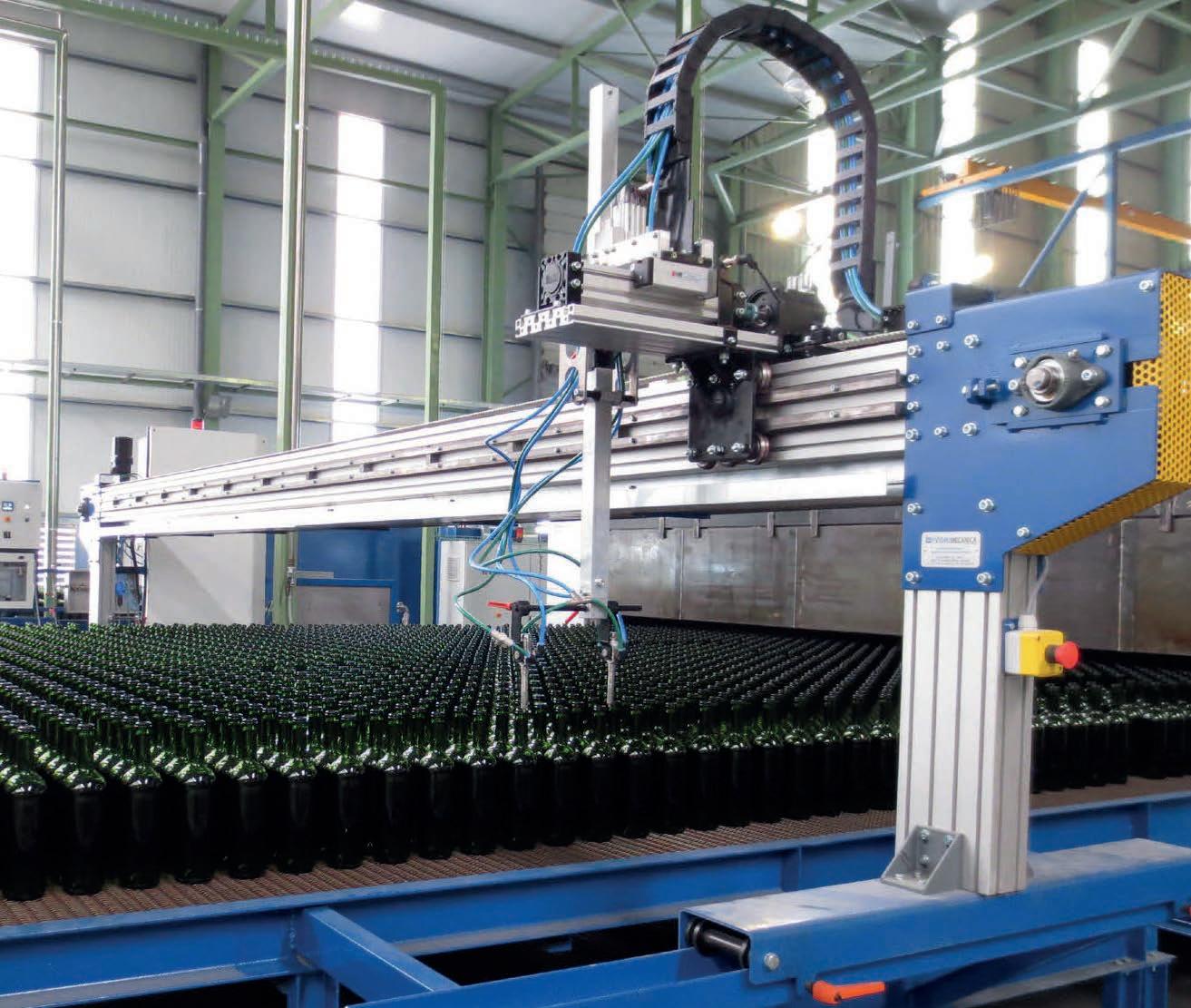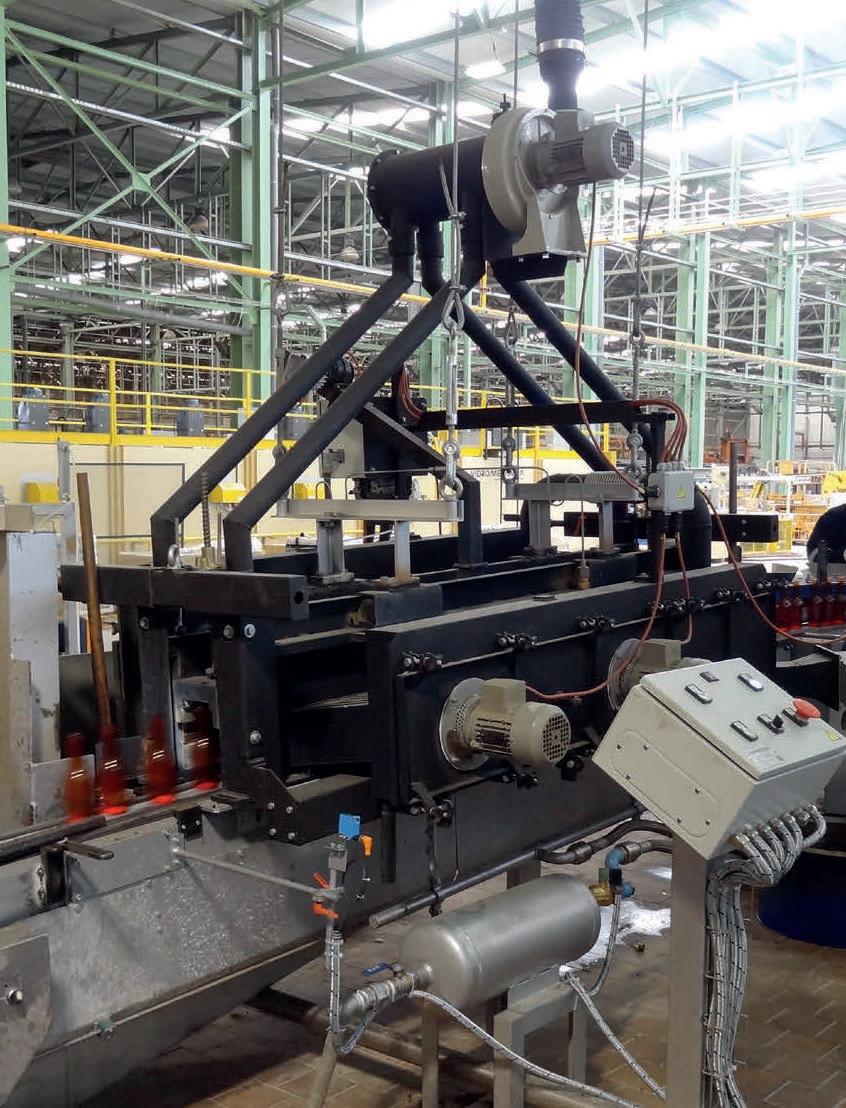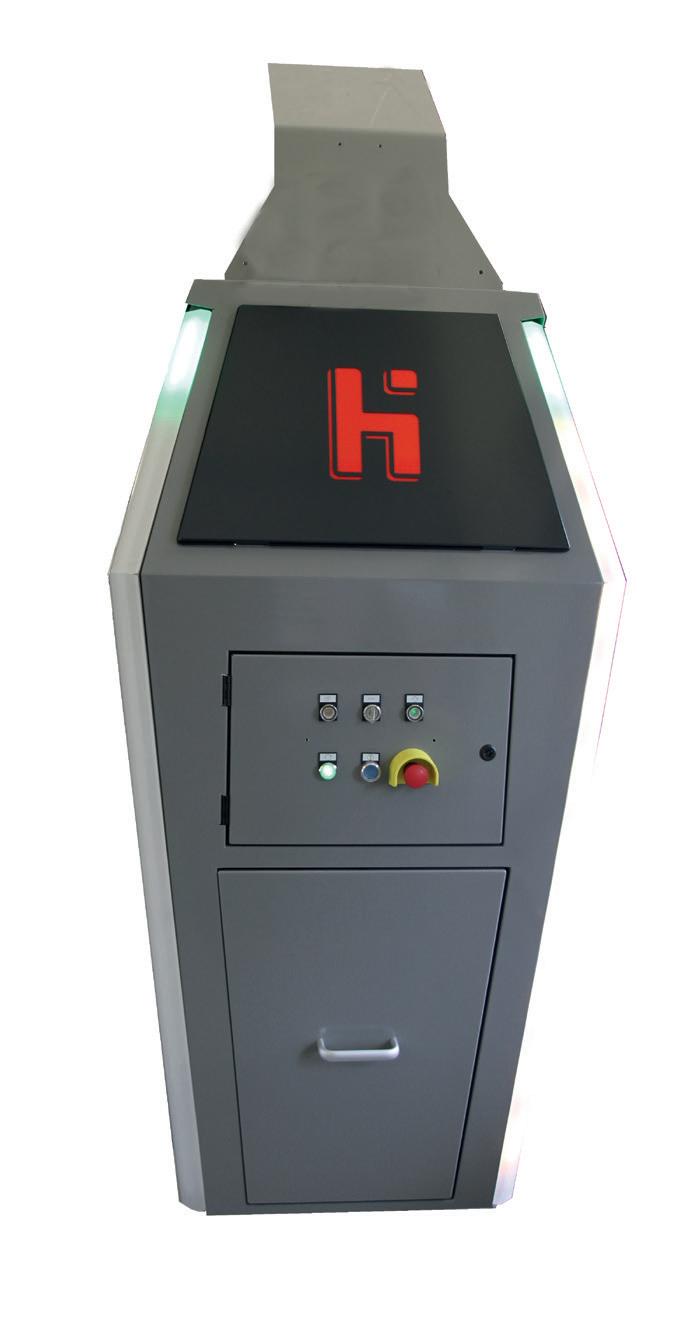
4 minute read
Lubrication: Heye International
Blank side robot optimises glass container production
Peter Witthus* discusses how its new BlankSideRobot increases work safety as well as providing higher product quality and improved productivity.
The new lubricating robot for the blank side is the latest in a series of equipment developments from Heye International aimed at optimising the glass container production process.
The BlankSideRobot has a compact design (Fig 1), which means that no additional control cabinets are required. The complete control is integrated in the robot itself and in the set-up station. In addition, Heye engineers have also given thought to the oil supply. The main focus was to give priority to short distances for the oil supply.
The reservoir for the oil, including an oil level indicator, is located in the robot cage (Fig 2). The use of a higher-quality oil results in segregation and sedimentation, supporting a focus on the ecological impact. The user can refill lubricant at any time through a special service opening.
In combination with the company’s Multilevel Safety and Protection Concept and SpeedLine IS-Machine, the robot also increases safety of the system and for the user.
Health and safety
The first thing that catches the eye is the new compact design with integrated LED strips. The direction of travel, oil level, general operating status, operating mode and countdown to the start of the robot are displayed by the LEDs. Particular attention was paid to both safety of the system and safety of the user personnel. When it comes to system safety, the focus is on collision prevention/detection (between robot and invert) and a nondestructive tool.
The first stage is collision avoidance. The SpeedLine’s invert mechanism stops as soon as the lubrication robot is in the collision area. The second stage is collision detection. If a collision does occur, the station is automatically stopped to prevent further damage. The third stage is the use of a “non-destructive” lubrication tool. Heye International uses a breakaway magnetic coupling.
If there is actual contact between the invert and the lubricating head, the front part of the tool detaches from a magnetic coupling on the lubricating tool. A catch rope, similar to the rims in Formula 1, prevents the lubricating tool from falling uncontrolled into the machine.
Safety is guaranteed by several equipment features. First, a safety cage avoids operator contact with the moving robot arm. The whole unit (hanging on the overhead rail) is equipped with sensors. When the robot starts its lubrication process, the area in the direction of travel is monitored by sensors. If someone enters this area, the BlankSideRobot stops automatically. In addition, retractable panels prevent someone from reaching past the robot and into the IS machine.
� Fig 1. Heye BlankSideRobot.
Operating principle
The robot runs on a rail in the overhead beam. This means that the floor is free from obstructions and mould changes can be performed without any interference from the robot. All new Heye IS-Machines are prepared for the installation of the robot. Due to the excellent control of force from the robot into the overhead beam, there is a low susceptibility to vibration.
The robot sprays into the opened moulds on the blank side. “Swabbing on the fly” is the key advantage, which means that a production stop is unnecessary. Short spraying cycles with a small amount of lubricant results in avoidance of any need to reject bottles after swabbing. A special programme allows spraying of the neck ring, within the same time an operator swabs the blow moulds by hand.
Depending on local conditions, as well as the production process and container type, many advantages can be realised: � Zero rejects from swabbing � Avoidance of section stops � Up to 75 % saving on lubrication � Improved operator safety � Stable and repeatable volume, thickness and location of swabbing lubricant. � Consequently, more time is available for operators to focus on production optimisation. � Automation solutions and closed loops to reduce manual operator interference.
Set-up
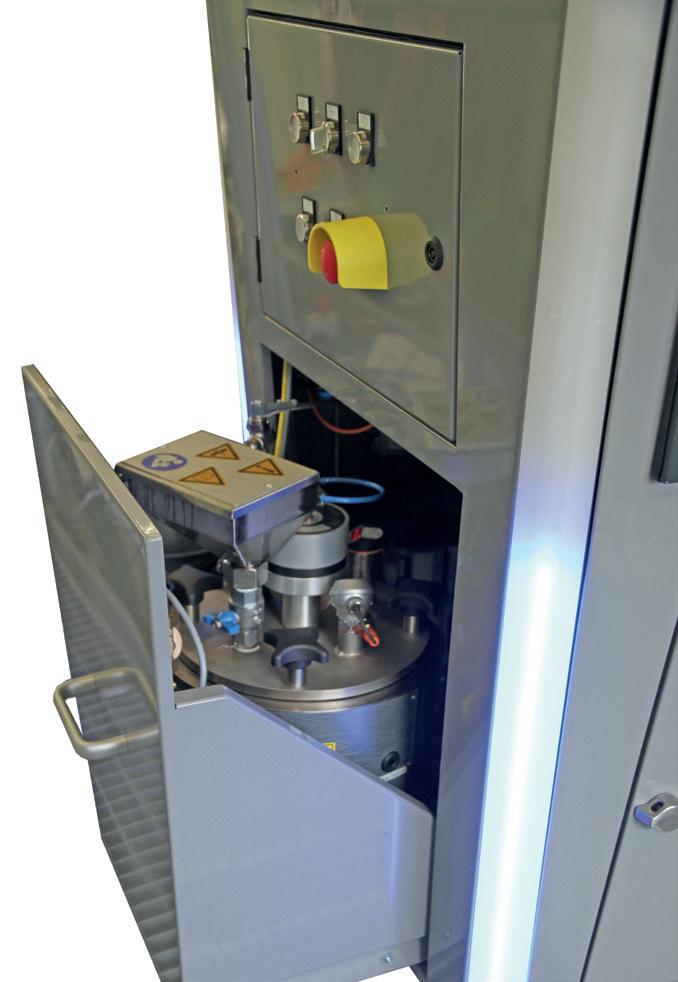
procedure. This can be performed by a zero-station in front of the IS-Machine. While one job is running, the settings for the next article can already be adjusted. The user sets the trajectory points and movement speeds. Once stored in the control system’s article database, the settings can be reused if the article is produced again.
In assortment operation, the HeyeBlankSideRobot can support up to four mould and finish jobs. This is perfect for use in product testing. Running the robot is easy, supported by its advanced control with an easy-to-use touch screen to help the operator to do his job. The lubrication process is fully automated with a simple start/stop command. No additional control cabinets are necessary.
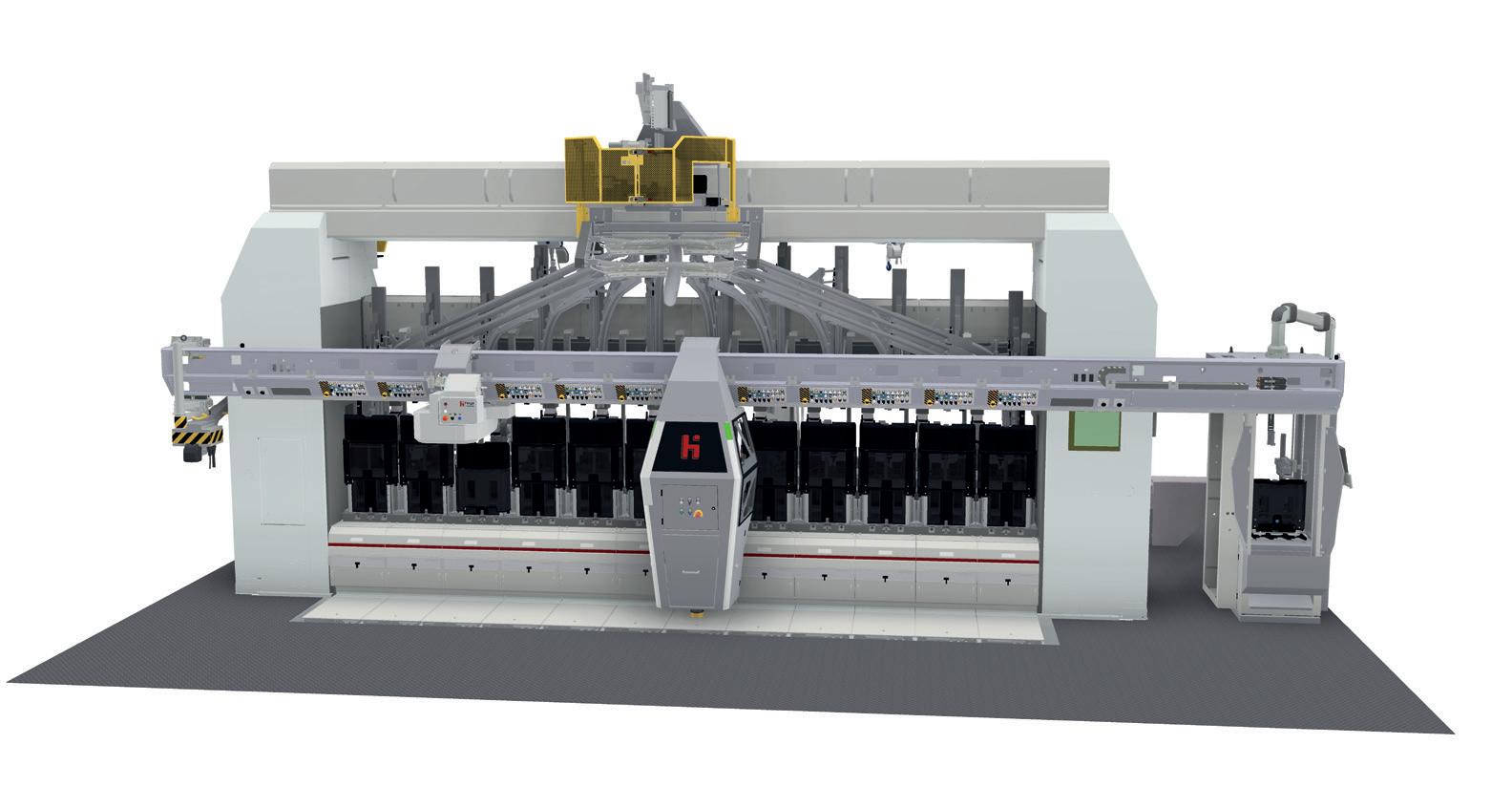
� Fig 2. Left. Drawer with oil reservoir, located in the robot cage.
�Fig 3. Above. Heye SpeedLine IS machine with BlankSideRobot.
Integration into SpeedLine IS machine
To be able to use all the features, a Speedline IS machine with HMST/FMT control is required (Fig 3). The integration into an on-site machine is easy. Only four electrical lines (1x power supply, 3x data lines) and a compressed air line are required. There are also a few mechanical adjustments to the existing SpeedLine IS machine. The signals are transmitted via CanBus and Profinet. This solution is suitable for all production processes (Blow & Blow, Press & Blow and NNPB) as well as for round and non-round goods in any glass colour. �
*Marketing, Heye International, Obernkirchen, Germany www.heye-international.com

www.vidromecanica.coM


HOT-END COATING COLD-END COATING
